How to Choose the Right Nozzle for FDM 3D Printing: A Comprehensive Guide
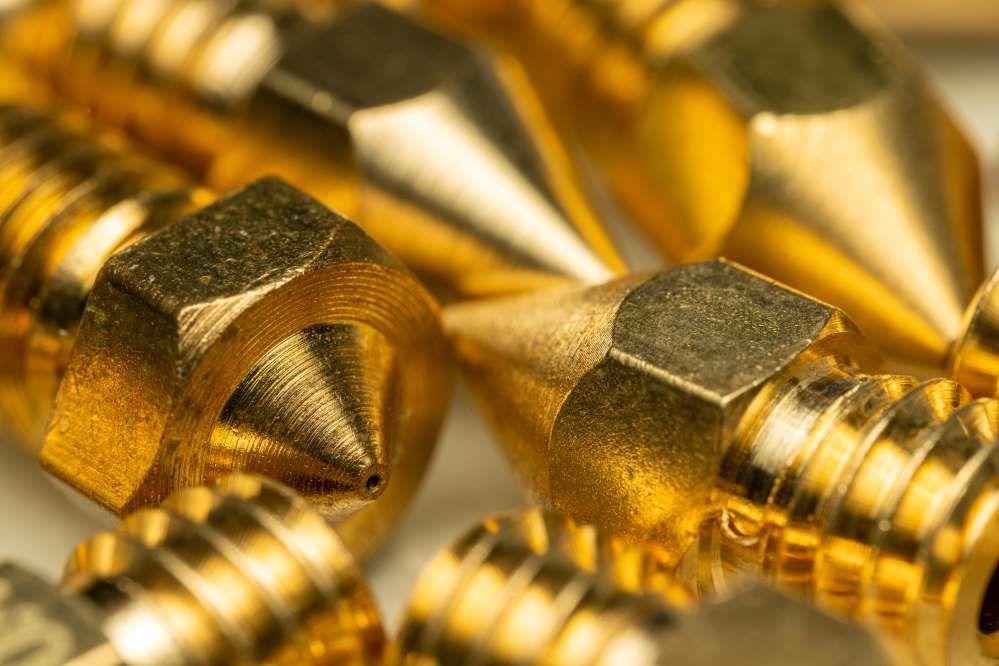
In FDM 3D printing, the nozzle plays a crucial role in determining print quality, speed, and compatibility with different materials. With so many nozzle types and sizes available, selecting the right one can be challenging. This guide covers everything you need to know about choosing the perfect nozzle for your projects, including material types, nozzle sizes, and their specific applications.

1. Overview of FDM 3D Printer Nozzles
The nozzle is where molten filament is extruded to form layers in FDM 3D printing. Nozzles come in various materials and sizes, each affecting print precision, durability, and compatibility with different filaments. Understanding nozzle differences can help you achieve better results depending on your project requirements.
2. Common Nozzle Materials
Brass Nozzles
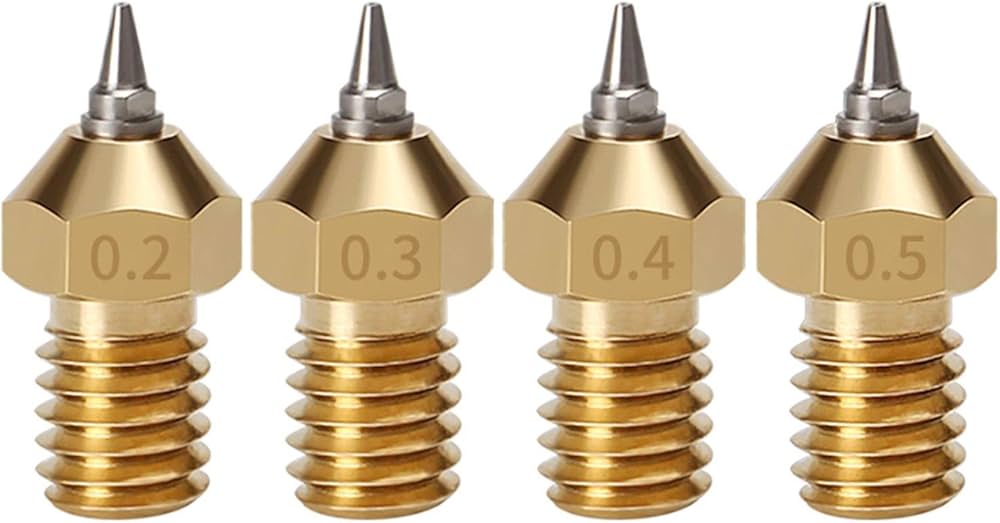
Pros:
- Most common and affordable
- Excellent thermal conductivity, which helps maintain stable extrusion
- Perfect for non-abrasive filaments (PLA, ABS, PETG)
Cons:
- Wears out quickly when used with abrasive filaments (e.g., carbon fiber or metal-filled filaments)
Use Case:
Ideal for everyday printing with standard filaments such as PLA, ABS, and PETG.
Hardened Steel Nozzles

Pros:
- Extremely durable, suitable for abrasive filaments
- Can print with carbon fiber, metal-filled, and glow-in-the-dark filaments
Cons:
- Lower thermal conductivity than brass, which may affect print quality slightly
- More expensive than brass nozzles
Use Case:
Best suited for users printing with abrasive filaments that quickly wear out brass nozzles.
Stainless Steel Nozzles
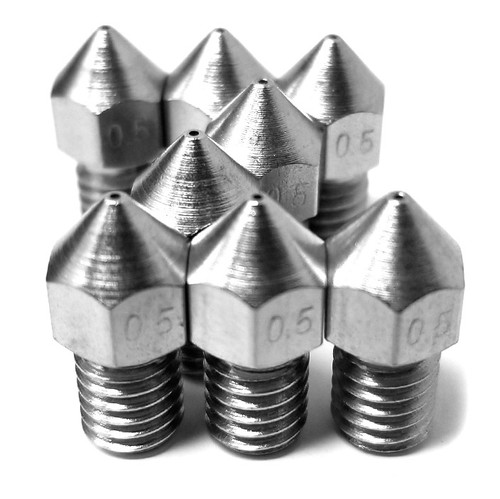
Pros:
- Corrosion-resistant and food-safe
- Suitable for medical and food-related prints
Cons:
- Lower thermal conductivity compared to brass
- Not as durable as hardened steel for abrasive filaments
Use Case:
Good for specialized applications requiring food safety or prints that must resist corrosion.
Ruby-Tipped Nozzles
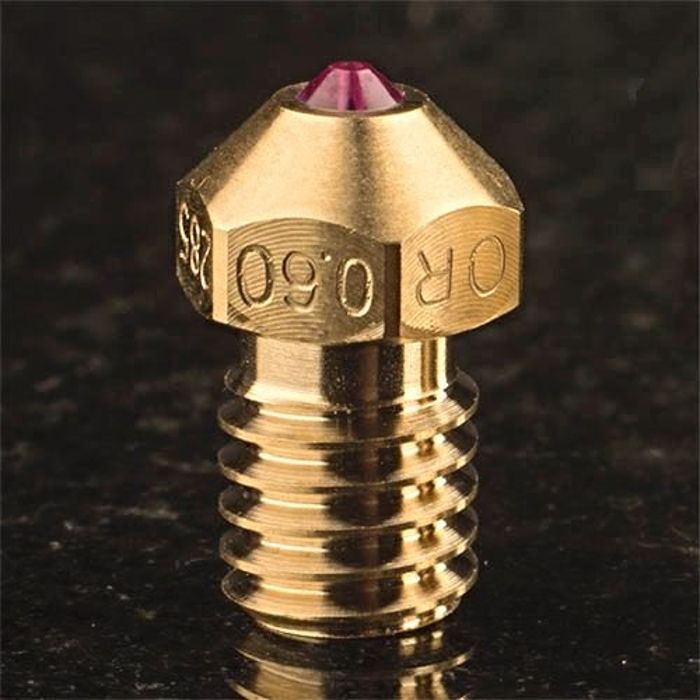
Pros:
- Best for extremely abrasive materials
- Long-lasting with excellent durability
Cons:
- Extremely expensive
- Only necessary for frequent use of highly abrasive filaments
Use Case:
Ideal for industrial applications involving large-scale use of abrasive filaments like carbon fiber or metal-filled materials.
3. Choosing the Right Nozzle Size
How Nozzle Size Affects Print Quality
The size of the nozzle directly impacts the layer height, print resolution, and overall finish of your 3D print. Smaller nozzles (e.g., 0.2mm) provide high-resolution prints with fine details, while larger nozzles (e.g., 0.8mm) allow faster prints but with less detail.
When to Use Larger Nozzles (0.6mm, 0.8mm, etc.)
Pros:
- Faster print times due to higher extrusion rates
- Ideal
for large objects or when speed is more important than fine detail
- Better for thick walls, infill, and structural parts that don’t require high resolution
Cons:
- Reduced print resolution and surface detail
- Limited to thicker layers, making fine details more challenging to achieve
Use Case:
Larger nozzles are great for rapid prototyping and large-scale prints where precision is not critical. For example, if you’re printing large mechanical parts, enclosures, or functional components, a 0.6mm or 0.8mm nozzle will help reduce print time without sacrificing strength.
When to Use Smaller Nozzles (0.2mm, 0.3mm, etc.)
Pros:
- Exceptional detail and surface finish
- Perfect for intricate prints, miniatures, and detailed prototypes
- Finer layers and smoother surfaces
Cons:
- Slower print speeds due to reduced extrusion rates
- Higher likelihood of clogs, especially with certain filaments
Use Case:
Smaller nozzles are best for high-precision prints where detail is essential. For example, architectural models, artistic sculptures, or miniatures benefit from using a 0.2mm or 0.3mm nozzle.
4. Best Nozzle for Different Filament Types
PLA, ABS, PETG, TPU
For standard filaments like PLA, ABS, PETG, and TPU, a brass nozzle is typically sufficient. These materials aren’t abrasive, and brass provides excellent thermal conductivity, leading to consistent extrusion and good print quality.
Abrasive Filaments: Carbon Fiber, Metal, Glow-in-the-Dark
If you’re printing with abrasive filaments, such as carbon fiber or metal-infused filaments, you need a nozzle that can withstand wear. Hardened steel or ruby-tipped nozzles are ideal for these materials. Brass nozzles wear out quickly with abrasive materials, causing inconsistent prints and early nozzle replacement.
5. Real-World Examples of Nozzle Selection
Case Study 1: High-Detail Miniature
A hobbyist printing a detailed miniature figurine for tabletop gaming decided to use a 0.2mm brass nozzle to capture every intricate feature of the model. The finer nozzle allowed for precise layer deposition, resulting in a highly detailed and smooth final product.
Case Study 2: Large, Fast Structural Print
A manufacturer needed to print a large prototype part for an automotive component. Using a 0.8mm hardened steel nozzle, they managed to reduce print time significantly without sacrificing the structural integrity of the part. The hardened steel nozzle also allowed them to print with carbon fiber filament for added strength.
6. Best Practices for Nozzle Maintenance and Longevity
Regardless of the nozzle type, regular maintenance is essential for ensuring consistent print quality and extending the life of your nozzle. Here are some tips:
- Keep Nozzles Clean: Use a wire brush or nozzle cleaning kit to remove any residue or buildup.
- Prevent Clogs: Regularly perform cold pulls (using nylon filament) to remove filament debris inside the nozzle.
- Dry Filaments: Moisture in filaments can lead to clogging and reduced print quality. Store filaments in dry, sealed containers.
- Inspect Nozzles Regularly: Check for signs of wear or degradation, especially if using abrasive filaments frequently.
7. Conclusion
Choosing the right nozzle for your FDM 3D printer depends on your specific printing needs, from material type to desired print quality and speed. Brass nozzles are perfect for everyday printing, while hardened steel and ruby-tipped nozzles are ideal for more demanding applications involving abrasive materials. Nozzle size also plays a critical role in balancing print detail and speed, with smaller nozzles offering precision and larger nozzles offering faster output. By understanding the differences between nozzle materials and sizes, you can significantly improve your 3D printing results and prolong the lifespan of your equipment.
References:
- 3D Printer Nozzles: Brass vs. Steel vs. Ruby
- How Nozzle Size Impacts Print Quality and Speed
- The Best Nozzles for Abrasive Filaments
- Nozzle Maintenance Tips for Better 3D Printing

Introduction: In the fast-paced world of motorcycle design, performance and efficiency are paramount. One of the most significant trends shaping…
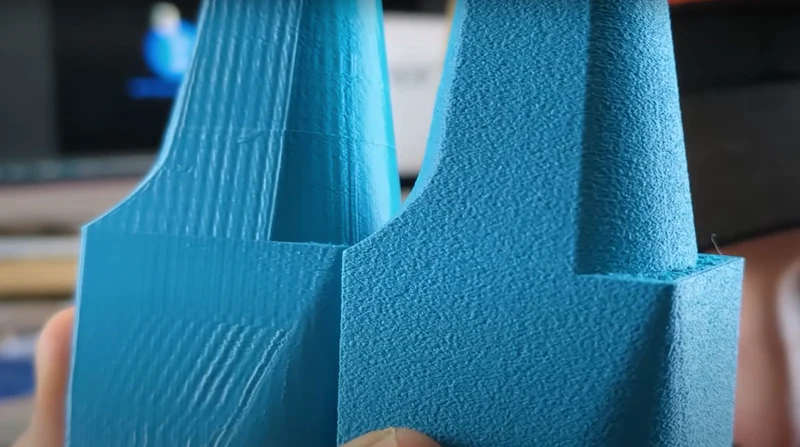
In 3D modeling, creating visually stunning models is not just about aesthetics—it’s also about how efficiently and correctly the model…